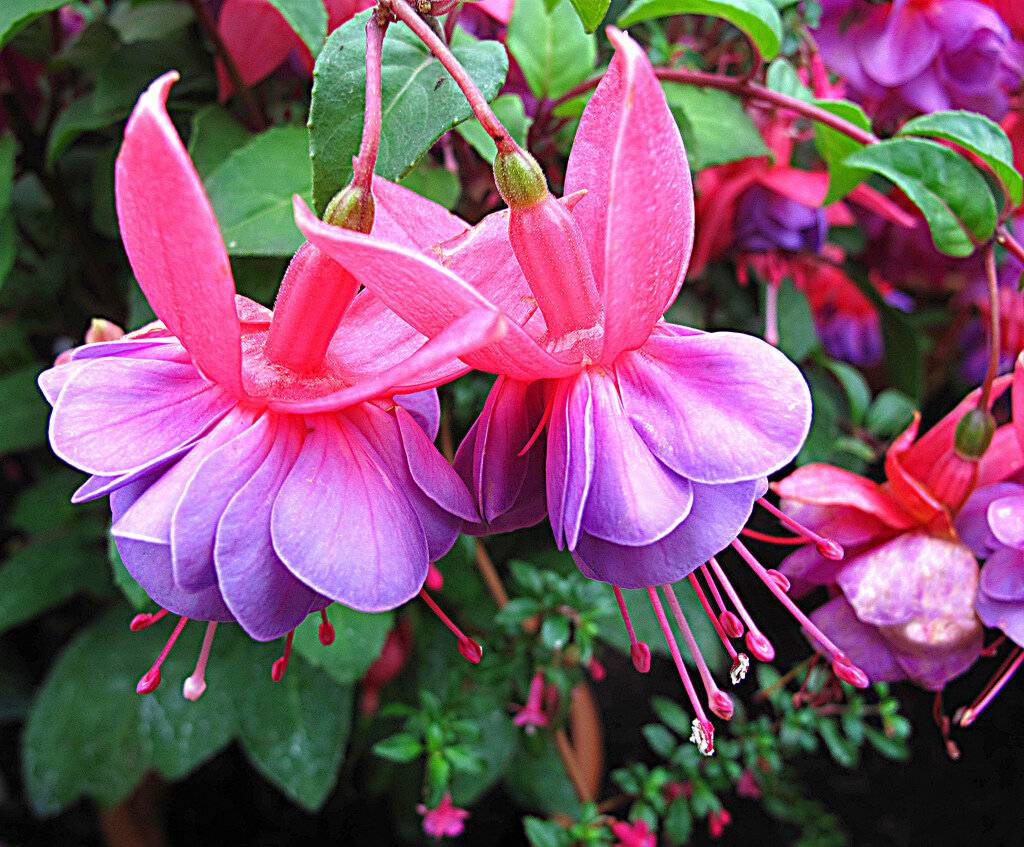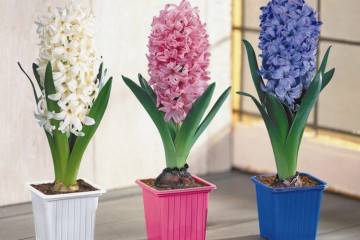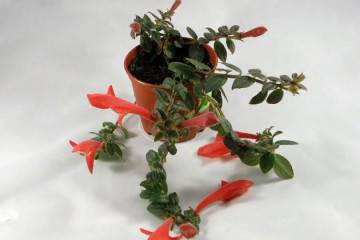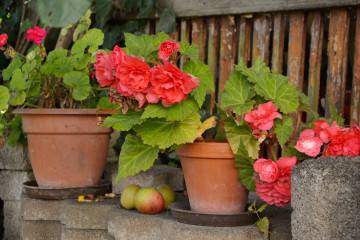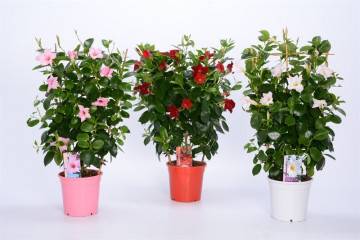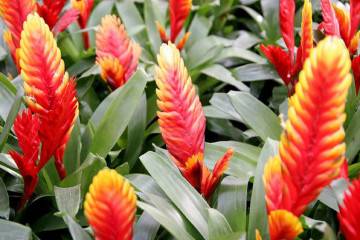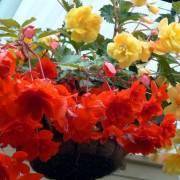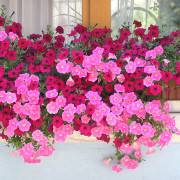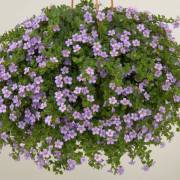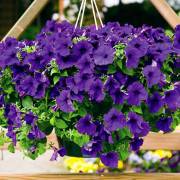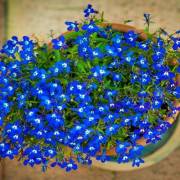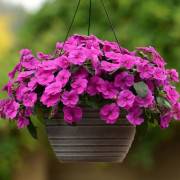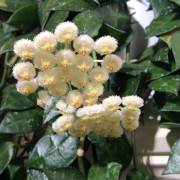Fuchsia ampelous - growing and care at home
Content:
Fuchsia is a perennial plant of the Fireweed family. This unique culture grows in different types: small trees, shrubs or ampelous plants. Fuchsia ampelous is an ornamental plant with flexible flowing shoots. Its leaves are elongated, dark green or reddish in color. The flowers are brightly colored, varied in shape and shade. Terry fuchsia blooms very exotic, it is impossible to take your eyes off its multi-petal inflorescences.
History of appearance
Fuchsia as a houseplant was bred by the French scientist C. Plumier in 1695. He met an unknown but very beautiful plant during an expedition to the West Indies and brought it to Europe. The flower got its name (Fuchsia L) in honor of L. von Fuchs, a physician and botanist from Germany. The plant fell in love with flower growers, and since then more than a hundred different varieties of this exotic flower have been bred.
Homeland of the plant
Fuchsia is a plant from the southern hemisphere; these plants grow wild in the tropical and subtropical forests of South America, the Dominican Republic, Haiti and New Zealand.
Growing fuchsia and caring for it at home
Fuchsia ampelnaya is an unpretentious plant, growing at home does not require much effort, and its bright flowers will bring a bright tropical mood.
Watering
In summer, the plant is watered once every three days or more often, in autumn - once a week. In winter, this tropical flower does not need watering, but the soil in the pot should not dry out. It is best to water fuchsia in the morning or in the evening, while it is undesirable for the water to fall on the flowers.
Temperature
Although fuchsia is an undemanding plant, it is very sensitive to temperature conditions. When it rises, it stops blooming, and if the air in the room warms up above 25 ° C, then the buds and leaves begin to crumble. Therefore, in order to admire its beautiful flowers, you should buy a room thermometer and closely monitor the changes in the "climate" in the apartment.
In winter, fuchsia needs low temperatures, about 15 ° C, so it is better to take the pot with the plant to the glazed balcony, to the basement or to the winter garden.
Lighting
The homeland of the flower is tropical forests, but bright sunlight is harmful to it, so you should not put the pot on the southern windowsill. The ideal lighting for a plant is diffused light. Strong shading also negatively affects the condition of flowers and leaves, therefore, to grow a strong plant in a lack of light, artificial diffused lighting is used.
Spraying
Fuchsia does not tolerate heat and dry air, so in summer the plant is periodically sprayed with settled water just below room temperature. On especially hot days, the flower should be sprayed both in the morning and in the evening.
Humidity
This exotic plant thrives best in a humid atmosphere. If the air in the room is very dry, you should turn on the humidifier or put a container with water. However, with very high humidity, leaves and flowers can rot, so measure is needed in everything.
Priming
You can use any primer for fuchsia. A store-bought houseplant mix works well. The flower will like it if the soil is of a loose structure: drainage is placed at the bottom of the container, and a mixture of ash, peat or sand is added to the soil itself. Before placing the soil in the prepared pot, the soil must be moistened.
Top dressing
Fuchsia should be fed about once a week; store fertilizers are well suited for this purpose. Top dressing is applied from March until the end of autumn.
Bloom
Fuchsia flowers are divided into three types: double, semi-double and simple. The colors are bright and varied, but the most common color is hot pink, which was even named after this wonderful flower - fuchsia.
Flowering care
The plant blooms for a long time and profusely, the flowering periods are slightly different for different varieties. And during this period, special attention should be paid to the flower;
- dried inflorescences must be removed in time;
- fuchsia is often watered, but in moderation, since with an excess of water, it can begin to shed flowers;
- during flowering, the plant must be protected from drafts;
- it is not recommended to rearrange the fuchsia pot or turn it.
Pruning
To grow ampelous fuchsia, she needs to periodically do anti-aging pruning. The procedure is carried out in the spring, until the flowering phase has come, and in the fall before wintering.
Reproduction
The florist practice two methods of reproduction.
Seed method
Fuchsia seeds are planted in containers filled with a moist substrate. The containers are covered with transparent lids and placed in a bright place, protected from direct sunlight. The substrate should be moist all the time, and the lighting should be about half a day (it is good to use an ultraviolet lamp for this).
When the seeds germinate, the lids are removed from the containers twice a day to allow the sprouts to air. After a month and a half, the sprouts begin to gradually take out into fresh air for hardening. Two months after that, they are seated.
Vegetative
An easier and more convenient way to propagate fuchsia is with cuttings that remain after spring pruning. Leaves are removed from the cuttings, leaving 1-2 pairs on each, so that they do not take away the strength from the sprout. After that, the cutting is placed in water, covered and left at a temperature not exceeding 25 ° C so that the plants do not rot. After about 10 days, when the first roots appear, young fuchsias are seated in cups with soil.
Transfer
The flower is transplanted every year, preferably in the spring. The container for planting needs to be taken a little more than the root ball of the plant, 1-2 cm wider than the previous pot. Before planting, the plants carry out preventive procedures: they cut off diseased branches, shorten healthy ones and check the root system for rot. Rotten roots are removed, and the soil for transplantation is treated with potassium permanganate. The transplanted plant is well watered and sprayed, and after 20 days, fertilizers are started.
Possible growing problems
To get a healthy plant, you need to get rid of pests in a timely manner. Most often, fuchsia is attacked by whiteflies, aphids and spider mites.
Whitefly is the most dangerous pest for this tropical plant, its larvae extract juices from the plant, and the excrement of adults contaminates the flower and can lead to fungal diseases.To combat whitefly and aphids, you need to treat the plant with soapy water.
To save fuchsia from a spider mite, its leaves are sprayed with warm water.
Other problems:
- from insufficient watering, the leaves can wrinkle;
- if during the flowering period the soil in the pot dries up, then the buds may crumble;
- yellowness on the leaves may appear due to a lack of nutrients in the soil or waterlogging of the soil;
- if the fuchsia roots change color from white to brown, then excess moisture is retained in the pot with the plant;
- from dry air, the leaves begin to dry and change color to brown.
Fuchsia species
According to the growth form, fuchsias are divided into bush, ampel and semi-ampel.
- Ampel fuchsias are distinguished by long, hanging down shoots that look great in pots. The most beautiful ampelous varieties: Blue Angel, distinguished by the original white-purple color of flowers, Anabel is a white ampelous fuchsia with large double flowers.
- Fuchsias of semi-ampelous varieties at the beginning of their development look like bush, but later, under the weight of the flowers, the branches droop, and the plant becomes similar to ampelous. Famous varieties are: La Fiesta - semi-ampelous fuchsia with delicate pale pink flowers and Golden Monica - bright large-flowered fuchsia, which differs from the rest in the golden color of the leaves.
Thanks to the beauty and variety of flowers, fuchsia is loved by many flower growers and collectors. In different countries of the world there are societies of lovers of these flowers and even exhibitions are held. These amazing flowers bring vibrant colors to gardens and apartments.
